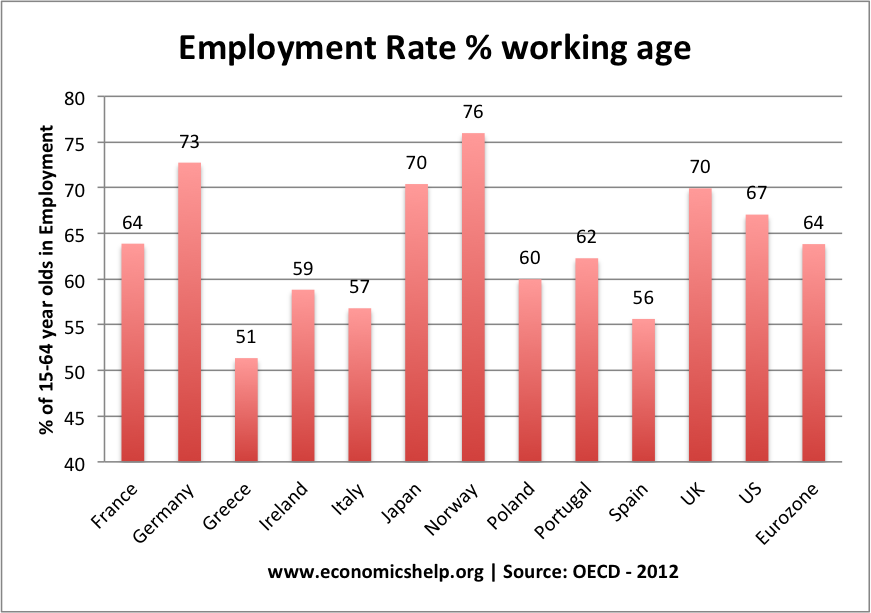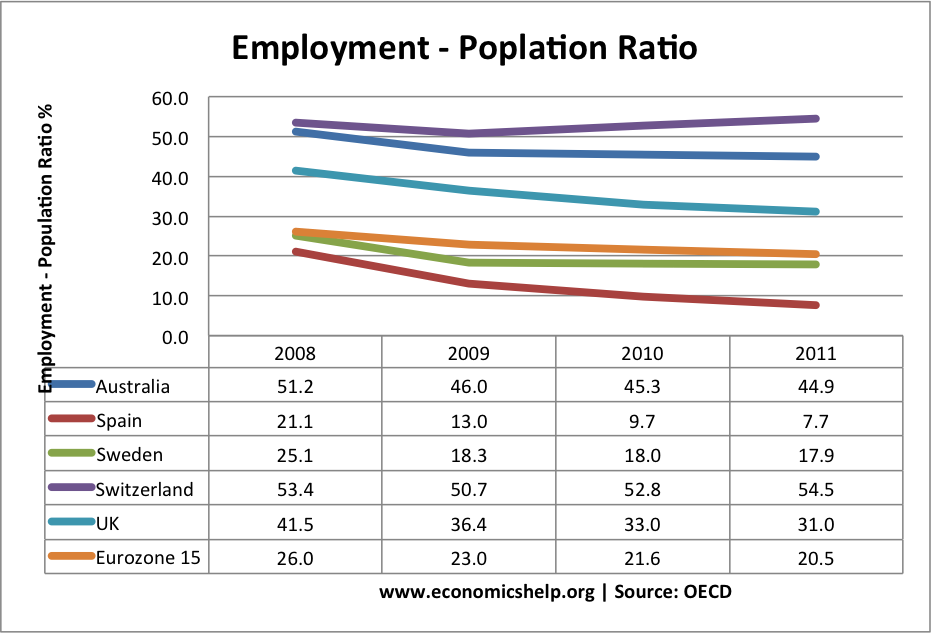A look at some varying employment rates across OECD countries.

Source: OECD short term Labour Market stats
Employment rates are determined by the number of people of working age, who have a job.
The employment rate excludes:
- People who are unemployed. – actively seeking work and willing to take work
- People who are students
- People who take early retirement.
- People on disability or sickness benefits.
- Parents staying at home to look after their kids.
Implications of Employment Rates
- A fall in the employment rate to less than 70% is an indicator that the economy is working well below full capacity.
- The government will be losing out on employment tax revenue
- The government will be paying more on welfare benefits to support those out of employment.
Employment – Population Ratio
Another issue is the size of the working age population as a % of the total population. For example, Japan has an employment rate of 70% of the working age, but with an ageing population, this is a small % of the total population.

Note: I got these from OECD and then couldn’t find the original source in the OECD stats database. Somehow I’m suspcious of the only 7.7% of the Spanish population working. I know Spain is facing an employment crisis, but it seems too low.
